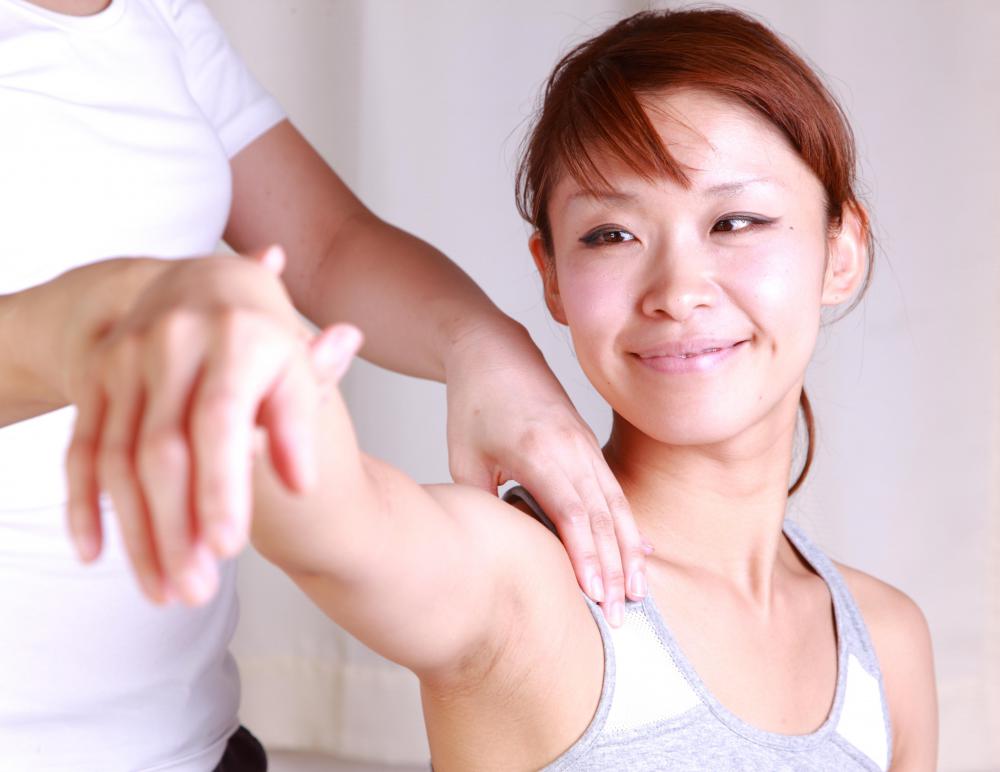At WiseGEEK, we're committed to delivering accurate, trustworthy information. Our expert-authored content is rigorously fact-checked and sourced from credible authorities. Discover how we uphold the highest standards in providing you with reliable knowledge.
In Traditional Chinese Medicine, what is a Pulse Diagnosis?
A pulse diagnosis is an important part of the diagnostic process in Traditional Chinese Medicine (TCM), an ancient medical practice which has been an important part of Chinese culture for over two thousand years. The practice of TCM relies on the basic principle that illness arises from imbalances in the body's energy or lifeforce, also known as qi. A practitioner who has been trained in TCM focuses on identifying and resolving the source of the imbalance, using a variety of techniques.
When a patient approaches a practitioner, there are four major components which are used to evaluate the patient before coming up with a diagnosis. These components are inspection, inquiring, listening, and a pulse diagnosis. Inspection involves a physical review of the body, including the tongue, with an eye to any and all signs of an imbalance. The listening process is continual, as the practitioner considers the way in which the patient speaks and behaves. During the inquiring phase, the TCM practitioner actively asks questions about the patient's condition in an attempt to glean even more information.

To perform a pulse diagnosis, the practitioner feels the patient's pulse, usually in a variety of locations. The pulse can provide clues to what is going on inside the patient's body, and if the quality changes from location to location, this is also noted. Learning to accurately feel the pulse is challenging, as subtle differences are said to be extremely important. Some learners in the field struggle with the pulse diagnosis, since it can seem very imprecise sometimes.

As the pulse is felt, the practitioner evaluates the frequency, depth, quality, shape, strength, and rhythm. By positioning the fingers in different places, the practitioner can get in touch with different meridians of energy in the patient's body, narrowing a problem down so that he or she can clearly evaluate the cause. After considering the quality of the pulse in a number of locations, the practitioner can start to formulate a diagnosis, considering all of the other information which has been gathered during the session.

In China, TCM is taken very seriously, and many Chinese people rely on TCM for diagnosis and treatment of all medical conditions. TCM includes Chinese herbalism, acupuncture, moxibustion, acupressure, and qigong, among many other disciplines. In the West, TCM is usually treated as alternative or complementary medicine, with patients considering aspects of both East and West in their treatment. The pulse diagnosis is actually one of the more mainstream aspects of TCM, as Western doctors also use a form of the pulse diagnosis to evaluate their patients, although they may not frame it in the sense of the flow of energy through meridians. If you are integrating Eastern and Western medical practices into your healthcare, make sure to disclose this to your practitioners, so that they can provide the best care possible.
AS FEATURED ON:
AS FEATURED ON:














Discuss this Article
Post your comments